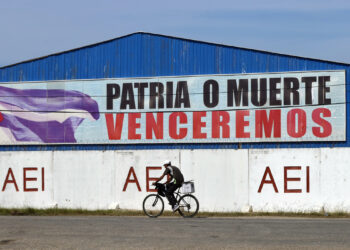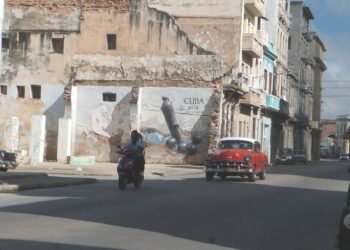One of the most emblematic places of all Havana, where dreams are born and passions overflow, the Latinoamericano Stadium, could soon become a national monument, an award not only to its architecture, but to what it represents in the daily lives of all Cubans.
The popular “Coloso del Cerro”, headquarters of the loved and hated Industriales baseball team, depending of course on the point of view of the national sport fans , treasures in its bowels key moments of Cuban history , not only of sports but also cultural and political besides being a landmark in Havana geography.
For this reason, during the recent session of the Ninth Workshop of built and natural heritage , held in Havana on April 16 and 17 , the Municipal Delegation of Monuments, along the Provincial Heritage Centre , proposed to raise the request for the Latino to become a national monument .
The idea is not far-fetched, as the No.2 Act governing the particularities of such statements in Cuba this category may be granted to spaces, places, or areas where they significant events or processes of historical , scientific, ethnographic or legendary have taken place, or possessing architectural features of urban design and / or natural justifying its conservation and protection.
Humberto Tallería Valdes, director of the Museum of Cerro stated: “The Grand Stadium of Havana was called Latinoamericano Stadium since 1960. All its history is incorporated in the dossier submitted to the evaluation committee. . We believe that it has sufficient equity to be approved. “Later he listed the historical and constructive values it possesses.
Experts present highlighted the value that baseball reached since the nineteenth century as the most popular sport in the country. Among the historical aspects they highlighted its American origin, in a simpler version of what is known today; the creation of Cuban League baseball in 1878, and the beginning of their professional practice with the birth of the twentieth century.
The need for a stadium with the quality needed to accommodate the teams that formed the powerful Cuban professional baseball league, formed in 1940, with its great domestic stars, and Major League Baseball players who traveled to Cuba during the winter season, led the American Frederick Score Corporation to start its construction in May 1946.
Florence Peñate Diaz, major in Art History argued that the initial draft was prepared by the architect Max Borges junior. This plan was designed with a capacity for 30 thousand people ( 500 thousand in boxes, five thousand 300 in preference decks, 20 000 in stands and three thousand 200 in the sun stands) and built with concrete and steel structure roof covered with tiles from the lines right to left field.
Tellería explained in detail the constructive situation and its impact: “It was remodeled several times; but in 1971 it was expanded according to the project by architect Emilio Castro and engineer O’Farrill. In that year improvements in the outfield and the stands were made, expanding capacity to 55,000 spectators. The intervention had significant impact across the country, so that a wave of projects in other provincial capitals broke. ”
Countless sports events have marked its six decades of existence. They were in the early years epic clashes between the capital Almendares and Habana teams, and later became the homeland of the most winning team in national series since its inception: Industriales. Curiously, it hosted a bullfight on August 30 and 31, 1947, starring toreros Silverio Perez and Fermín Espinosa (Armillita).
The events that marked the most radical ideas in Cuba , had also arrived at this scenario: Outside of it the Batista police prevented trade unions make their act by May 1, 1952 , although it had been leased ; in November 1952 , José Antonio Echevarría and Fructuoso Rodríguez leading a group of university students protested the coup of March 10 ; and in December 1955 , college students proclaimed against the imprisonment of their colleagues , leaders of the FEU and the Revolutionary Directorate , jumping into the field carrying signs , where the energetic action of the immortal umpire Armando Mestri prevented the carnage from the soldiery.
Names like the Armandito el Tintorero, ever-present follower of baseball, represented by the bronze statue of the artist Jose Villa Soberon ; events such as the inauguration of the XI Festival of Youth and Students, on July 28 1978 ; or images of Fidel , bat in hand , starting games at the start of the Revolution ; constitute sufficient grounds to safeguard this controversial and engaging cultural heritage.
By: Dunia Torres










